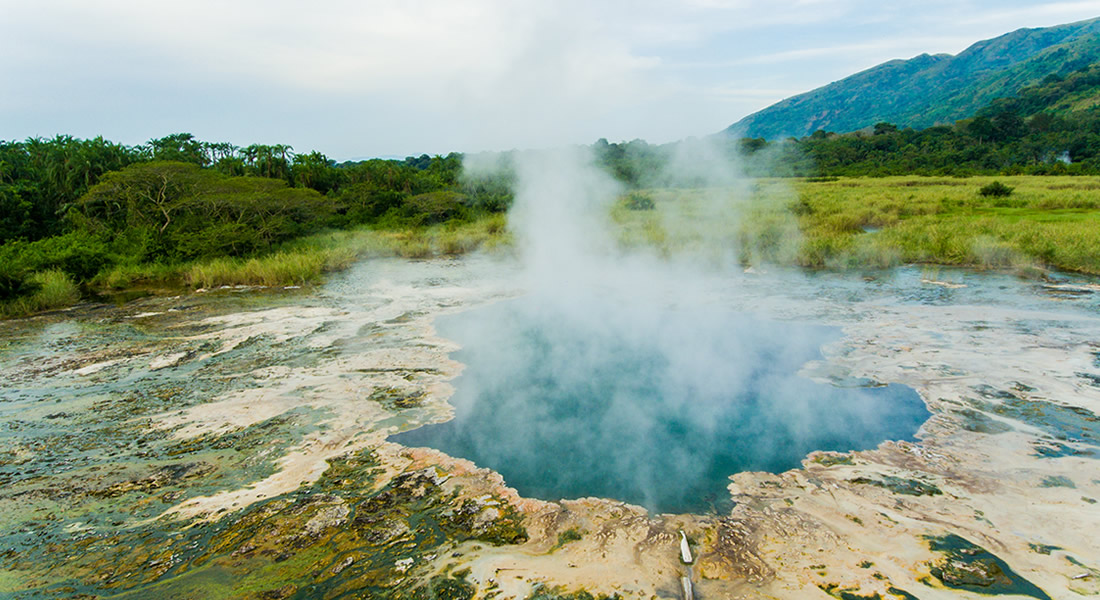Semuliki National Park is a continuation of the Eastern portion of the great Ituri forest of the Congo basin, one of Africa’s most distinctive biodiverse ecosystems well known for its abundance of old ancient species, the majority of which are endemic to the region. The forest is one of the few that survived the ice age period that last occurred over 18,000 years ago. It is situated in the southwest of Uganda against the backdrop of the Rwenzori mountain. Uganda and the Democratic Republic of the Congo are separated by the Semuliki River, which was gazetted as a national park in 1993 at an elevation of 670 to 760 metres above sea level.

The 220 square kilometre national park is home to more central African species than Eastern African species, which means that you can experience the central while in Uganda. Semuliki has been accumulating species for more than 25 thousand years, living with signs of ancient occurrences like hot springs and the western arm of the rift valley. The national park also contains over 300 species of trees, the majority of which are endemic to the area extending to the.
The endemic tree species are shared with the neighbouring state forests in the Ituri forest, which makes the park stand out as a unique destination in comparison to the other parks in the nation. The park’s vegetation is dominated by ironwood, which is scientifically known as cynometraalexandii. It is also noted with a riverine swampy forest along the river Semuliki at the boundaries.
Many shy animal species, including the grey checked mangabey, red-tailed monkey, Mona monkey, blue monkeys, elephants, African buffalo, dwarf antelope, sitatunga, bush pigs, and squirrels, may be found in the Semuliki environment. Crested guinea fowl, African wood owl, yellow-throated nicator, yellow-throated cuckoo, long-tailed hawk, black-colored love bird, dwarf hornbill, and blue kingfisher are just a few of the many birds that may be seen in the park.
The Sempaya hot springs are famous throughout the park; they can reach temperatures of up to 100 degrees Celsius, reflecting the formation of water from beneath the earth’s surface that has been heated by magma and seeps to the surface through tiny rock cracks. These hot springs can be found in two locations; the locals refer to them as the “female” and “male” hot springs, and they both lead through the forest. The water is so hot that it could cook an egg, and it’s from the female hot spring specifically that is used for medical purposes. Because of the blessing of the water, local ladies think one can become pregnant if they were previously childless.
On the western side of the Rwenzori mountain, a forest covers the Semuliki rift valley’s whole floor. It crosses four indigenous groups, including the Bakonjo cultivators, the Batuku, and the pygmies who are said to have come from the Ituri forest in the Democratic Republic of the Congo. Some more of this sort dwell in Bwindi Impenetrable National Park.
Semuliki National Park has a number of tourist destinations that offer the chance to partake in well-liked activities like game drives, hot spring visits, guided nature walks, hikes, and boat rides along the Semuliki river, which will allow you to see park animals, birding, and primate walks through various trails.
